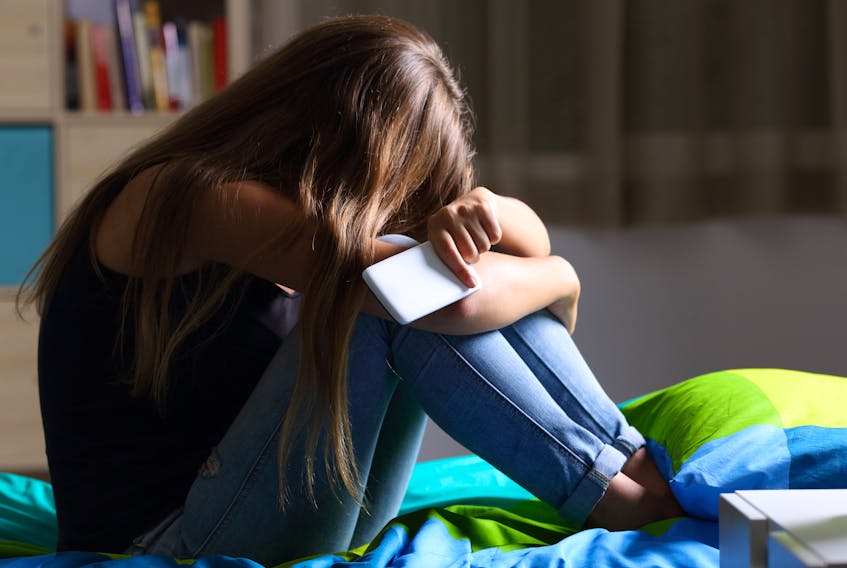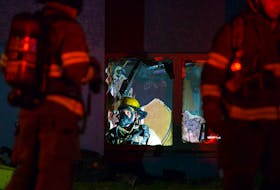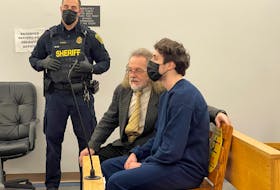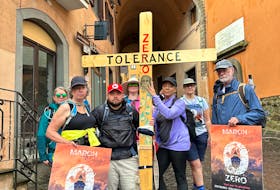COXHEATH, N.S. — A high school bullying incident has shone a spotlight on what it means to be a bystander.
In a video circulating last week, several students at Riverview High School in Coxheath appear to be doing nothing as a 14-year-old boy is picked up by a much larger boy and slammed to the floor.
The teenaged complainant said he was in a locker room getting changed for gym when several boys came in and went straight for him.
A variety of comments on social media condemn the teenage group for appearing uninvolved in the situation. In some instances, calls are being made for their punishment.

Michelle Jetha, an associate professor of psychology at Cape Breton University who teaches child development and adolescent psychology, said these types of incidents can be injurious for all involved.
Jetha hasn’t been made aware of the specifics of this case, but said the example was discussed during a recent lecture on rejection, bullying and victimization.
“We talked about this incident in terms of why that would be extremely harmful for that adolescent, and we had also talked about how the individuals who were watching those incidences are also feeling a lot of anxiety,” Jetha said.
Studies have shown that teens are most often bullied in front of their peers. More than half of the time, bullying was stopped within 10 seconds after a bystander stepped in. But peer mediation only occurs 11 to 19 per cent of the time.
Although unclear in this matter, some bystanders will actually reinforce or assist bullying behaviour.
Jetha said there are a variety of reasons why teenagers aren’t quick to intervene. And she noted that after an incident, bystanders may experience feelings of guilt.
"The bystander effect is well known in psychology,” she said. “Experimentally, adults are much less willing to intervene and help in certain situations, especially when there’s a number of people around, so the presence of others kind of diffuses their responsibility.”
Jetha said that students must be coached to understand how to possibly diffuse a situation, such as how to intervene, interrupt, or speak up to stop the bullying.
She said acts of intervention are often greatly tied to peer reactions. Personality factors may also play a role in prosocial or helping behaviour.
In many instances, youth will succumb to peer pressure to avoid being bullied or physically attacked themselves.
“They have a lot of fear,” Jetha said. “They may be fearful of being the next target. They may be fearful that if they intervene in some way and do the wrong thing then the bullying may get worse.
Research has shown that bullying causes a number of social, physical and mental health problems.
According to the Promoting Relationships and Elimination Violence Network (PREVNet), children who are bullied suffer more headaches, stomach aches, depression and anxiety.
Mental health problems associated with bullying also tend to last until later in life.
"Social rejection is painful. In fact, ostracism activates the same regions of the brain that physical pain activates," said Jetha.
Children who are bullied are more likely to miss school, show less engagement with school activities and their studies. They tend to suffer from lower academic performance, which in turn sets them on a trajectory for lower levels of educational attainment and lower-income levels as adults.
Jetha said the Coxheath video is a learning opportunity but cautioned over fighting back, as children who use aggression to deal with bullies often experience more prolonged and severe bullying as a result.
“We absolutely have to teach children to be assertive, and to be respectful and clear when addressing someone in a bullying situation,” Jetha said.
“We have to teach them how to respond and that they can trust adults to help stop the bullying.”
In terms of bystanders, Jetha said children should be taught social responsibility and what to do when they witness acts of bullying.
“We have to coach them and use role-playing scenarios to help them to understand how to intervene in a positive way.”
Both the Cape Breton Regional Police Service and the Cape Breton Victoria-Regional Centre for Education say they are conducting their own investigations into the Riverview incident.
A call to the principal of Riverview was not returned by press time on Wednesday.
Youth can talk to a councillor at any time by phoning toll-free at 1-800-668-6868 or by texting CONNECT to 686868.









